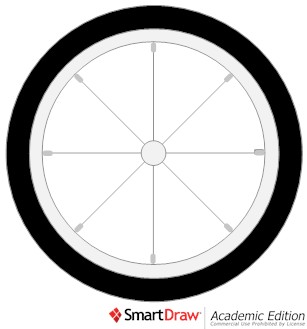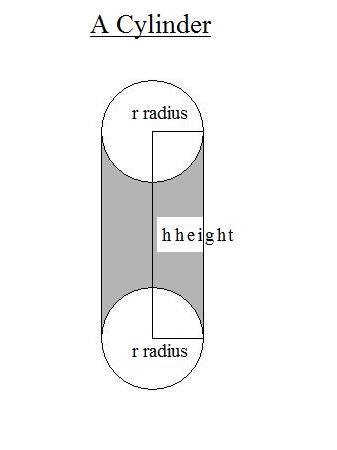This is a new article. The above link will allow you to view the original Microsoft Word document.
The Compact Disc was pioneered and brought to market by Philips and Sony. At the time, those who distributed and retailed consumer electronics thought Philips to be on a hiding to nothing. An optical audio device! That would be an oxymoron, were it not three words instead of two. The critics snorted thus and waved their flabby jowels about in disapproval. Using a Laser to read microscopic data was the stuff of science fiction. It would probably end up prohibitively expensive. Besides, everyone was more than content with Vinyl[1] and Magnetic tape.
Philips and Sony were taking a massive risk in developing this technology. The pages of history are littered with marvellous contraptions that did not catch on for one reason or another, among them Beta-max, Minidisc, Concord.
The reason why Concord was a financial failure, from the beginning, is not because it did not work, but because it was too expensive to run and maintain, and the paradigm shifted decidedly towards mass-transportation aviation vehicles such as the Boeing 747.
The reason why the Minidisc did not catch on as the replacement to the WalkmanTM[2] as the World’s foremost portable audio format is because the paradigm shifted towards Apple’s MP3 format.
The reason why MiniDV[3] never really caught on to replace VHS[4] as the foremost Camcorder format, is because the paradigm would shift towards Camcorders comprising Hard-disc drives, and Solid-State doped-silicon semiconductors.
In summation: just because the Compact Disc would work was no guarantee of its financial success.
Succeed it did, and it is still going strong more than 25 years later. True, the format has seen better days, but it is a device that has seen off replacements such as Super Audio Compact Disc and Digital Versatile Disc Audio. It is even successfully resisting a major paradigm shift towards MP3 and Streaming Audio Websites such as Spotify. Devices that can see off replacements and paradigm shifts are few and far between; can you think of another one? I know that I cannot, but this can be said of the Compact Disc.
How it Works:
This will not be an exhaustive explanation. I am not capable of such. I still consider myself a novice in the field of Mathematics and Electronics. I merely wish to treat of certain aspects of the encoding of data onto optical devices.
If one were to examine a Compact Disc under a microscope he would observe tiny depressions in the surface. These miniscule holes in the surface are known as pits. In a similar way, those parts of the surface of the disc that are not depressed are known as lands. I once heard on a television program, as a child, that the area of the pits relative to the surface-area of the disk is congruent with the area of a golf ball relative to the area of Greater London, England.
Why the above factoid stuck in my mind is unclear. I do not remember a lot of the content of television programs from the 90s. I do remember that Frank Butcher[5] ran over Tiffany Mitchell[6] in 1998, but that was matchless tragicomic gold.
Another factoid that stuck in my head from that television program concerning Compact Discs was that the pits of a “new generation of Compact Discs” would have pits whose area, in respect to the surface-area of the disc, would be congruent with the area of a grain of sand relative to the area of Greater London. Perhaps the above is true of D.V.D.s and Blu-rays which were not commercially available at the time that this program came out.
Observing these pits on the surface of the Compact Disc, one would be tempted to view them as a species of Morse code. Some pits are longer than others and it would be more than reasonable to fancy the longer pits dashes and the shorter pits dots. The above is reasonable but not the case. As my brother, Breandán once remarked:
“Not everything that is plausible is true!”
The ability to tap out a coded message upon the plumbing of a Soviet-Union Sanatorium in futile hope of escape will be of no use to us here, I am afraid.
A pit does not represent a 1, necessarily. Neither does a land represent a 0, necessarily. It is the transition between dots and dashes that represents an alteration between a succession of 1s and a succession of 0s.
For conceptual reasons, I shall use square brackets to represent a land, and hyphens to represent pits. Please use the width of the numerals as a method of visualising the length of the pits and lands.
For instance
[00]
Is a much shorter land than
[00000000000].
Likewise,
-11-
Is a much shorter pit than
-1111111-
The below is accurate in portraying a sixteen-bit binary number:
[0000]-111-[00]-11-[0000]-1-
But so is:
[1111]-000-[11]-00-[1111]-0-
To repeat myself: the transitions between pits and lands indicate that a succession of one particular number[7] has come to an end, and that a succession of a different number has begun.
The sample rate of a compact disc is 44.1 kilohertz, or 44,100 hertz. This means that the Laser is able to read and decode a 16-bit number from the disc once every 1/44,100 of a second.
In the first 1/44,100 the recording device samples the anologue electrical signal produced by the microphone, and accords a sixteen bit value to the amplitude of the signal. In the above graph, it accords the amplitude a value of 25,930TEN which in binary is 0110010101001010TWO
The Laser encodes25,930TEN or0110010101001010TWO as:
[0]-11-[00]-1-[0]-1-[0]-1-[00]-1-[0]-1-[0]
Onto the surface of the Compact Disc with a Laser.
In 2/44,100 the recording device samples the analogue electrical signal produced by the microphone, and accords a sixteen-bit value to the amplitude of the signal. In the above graph, it accords the amplitude a value of 17,268Ten which in binary is 0100001101110100TWO.
This is encoded onto the surface of the Compact Disc with a Laser as this array of pits and lands:
[0]-1-[0000]-11-[0]-111-[0]-1-[00]
With these two sixteen-bit numbers thus encoded, the surface of the Compact disc now looks like this:
[0]-11-[00]-1-[0]-1-[0]-1-[00]-1-[0]-1-[00]-1-[0000]-11-[0]-111-[0]-1-[00]
You will notice that the rightmost binary digit of the first sixteen-bit number and the leftmost binary digit of the second sixteen-bit number are contained within the same land. The computer is able to work out[8] when one sixteen-bit number has come to an end, and when another has begun.
When your Compact-Disc player reads the above information[9], it is able to manufacture an (analogue) electrical signal corresponding to the Sixteen-bit numbers with which it has been supplied. This electrical signal is an approximation of the original analogue electrical signal recorded by the microphone. This analogue electrical signal is then fed to an electromagnet positioned close to the metal diaphragm of a speaker cone. Sound is thus produced which is an approximation of the original sound recorded by a microphone.
16-bit numbers are changed into an analogue electrical signal by a digital-to-analogue converter. The analogue signal thus produced is sent to an amplifier and from thence to the speaker.
Epilogue.
The first phonograph was engineered by having a person sing into a cone. This cone channelled the vibrational waves produced by sound down into a diamond ‘needle’ held against a cylinder of wax. The cylinder rotated at a fixed number of rotations per second, and a helical groove was inscribed into the wax cylinder.
When the needle was reset, and the wax cylinder began to rotate, the cone would vibrate corresponding to the topography of the helical groove. A sound, approximating that of the original singer was produced. The cone that had functioned as a microphone was now a speaker!
What I have detailed above concerning the encoding of data onto a Compact Disc may seem far removed from the very first wax phonograph, however, if one were to ponder on it, although the process of recording sound has differed with the passage of a century, the principles of recording sound remain exactly the same.
[1] Polyvinyl Chloride. (C2H3Cl)n
[2] Even though it is common to use the term ‘Walkman’ to refer to every portable cassette player in existence, the term is copyrighted by Sony, and may only be used to refer to Sony portable Cassette players, (and other audio devices bearing this trademark.
[3] Mini Digital Video. That I even need to explain what a MiniDV cassette is in a footnote proves my point!
[7] We deal here with only two numbers, i.e. 0 and 1.
[8] A sixteen-bit binary number is comprised of sixteen binary digits, hence its name. A ‘binary digit,’ or ‘bit’ is what we term an individual 1 or 0 in binary code. The Computer merely needs to count to sixteen so as to determine where one sixteen-bit binary digit begins and another ends.
[9] Your Compact Disk Player is able to detect transitions between pits and lands by way of a photo-diode. The diode allows the passage of current in one direction – hence the ‘diode’ part of its name – if it detects the light from the laser-beam reading the compact disk – hence the ‘photo’ part of its name. This passage and stalling of current becomes a sequence of 1s and 0s corresponding to the information contained on the compact disc.


















